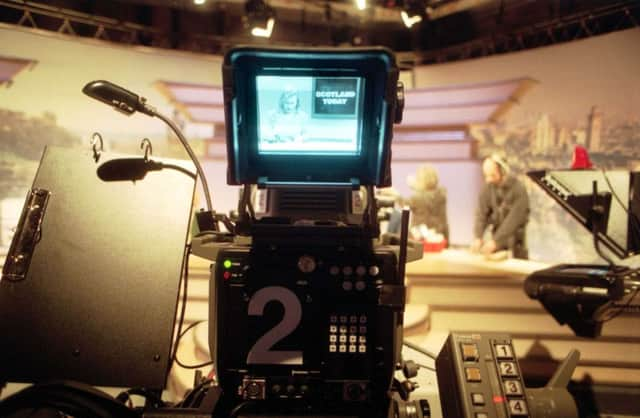Media studies course is gaining in value


Whenever the term “media studies” is uttered in the public domain it seems to provoke a set of stock denunciations: “a soft subject which dumbs down the curriculum”, a “Mickey Mouse subject” and so on. The criticism seems to have had an effect on the Scottish Qualifications Authority (SQA) as the new Higher is titled Media rather than Media Studies. The mouse has lost its tail!
Let’s take the “soft subject” argument. Although it is probably impossible to compare subjects in terms of difficulty, we can get some idea from SQA Higher examination statistics. The 2013 pass rate for Media Studies was 79 per cent compared to English 76, Mathematics 73, Physics 77, History 89, Modern Studies 85 and the average for all Higher subjects of 79. Thus the subject seems to be on a par with other subjects.
Advertisement
Hide AdAdvertisement
Hide AdHowever, one of the most remarkable changes has been the steady rise in the Media Studies pass rate from 63 per cent in 2009 to last year’s 79 per cent. This rise compares with a rise of 3 per cent in the overall pass rate.
The overall rate has increased slightly, as is to be expected as teachers of Higher subjects become more experienced in guiding pupils towards SQA assessment standards. The remarkable rise in the Media Studies pass rate is almost certainly due to the hard work of media teachers becoming more knowledgeable in the subject and its delivery.
Most media teachers have had little or no academic training in the discipline and there is a lamentable lack of both opportunities and funding for professional development. So media teachers have generally had to teach themselves. The naysayers will say that the figures show a dumb subject is getting dumber whereas I would wish to congratulate media teachers for their dedication and professionalism.
I doubt whether critics actually have any idea of what is involved in the subject. I would guess that they hark back to some sort of halcyon Govian past where the curriculum was ruled by the 3Rs of readin’, writin’ and ’rithmetic. 3Rs schooling was authoritarian, narrow, disconnected and uncritical, ideal preparation for assembly line work or office or military service. But it cannot fully prepare citizens to take critical, active roles in a super-complex future which demands a flexible, creative, collaborative and technologically sophisticated workforce.
American educationist William Doll has described some of the features of a fit-for-purpose 21st century curriculum. He playfully describes such a curriculum as being characterised by the “4Rs”: richness, recursion, relations and rigour. Richness implies curricular depth with multiple possibilities beyond the simple transmission of information. Recursion implies an open, transformative looping back to review what one has already done and seeing it anew. Relations refer to the multiple links within learners, between learners and between the classroom and the outside world. Rigour refers not to the static “rigor mortis” of the traditional disciplines but to a vibrant curriculum which allows pupils to critically review their own beliefs as well as the central assumptions of a subject.
Of course we want pupils to be literate and numerate. But this is not a case of either/or; we need both a 3Rs and a 4Rs curriculum. All academic and practical subjects require repetitive practice so that the basics become automatic. But these basics need then to be transplanted into fertile spaces which nurture creative, collaborative and critical skills.
The new SQA Higher Media qualification seems to me to show all the characteristics of Doll’s 4Rs. It builds on the basic skills of earlier years as well as giving pupils a lifelong framework for appreciating, creating and critiquing the media.
The course has two units: Analysing Media Content and Creating Media Content. The course assessment is an assignment which focuses on researching, planning and developing media content, and a question paper that focuses on analysing media content and contexts. A welcome change of emphasis is that pupils will have to consider the role of media within society. This takes the Media course closer to academic media studies than the previous Higher which had, to me, an over-emphasis on textual analysis.
Advertisement
Hide AdAdvertisement
Hide AdMedia teachers require a broad range of skills to deliver the subject: knowledge of how to analyse, design and create print, web, audio and audio-visual texts; knowledge of media industries, practices, economics and regulation; knowledge of the sociology of communications and ideas about media influence and how audiences actually use media.
As the media historian James Curran says, what critics do not understand is that “the media are the starting point, not the sum, of media studies. Analysis of the media provides a means of investigating the politics, economy, culture, social relations and imaginative life of society.”
So fellow media teachers, have no fear. Be loud and proud. Mickey Mouse is no cow’rin, tim’rous beastie!
• Rick Instrell is a member of the management committee of the Association for Media Education in Scotland www.mediaedscotland.org.uk
SEE ALSO